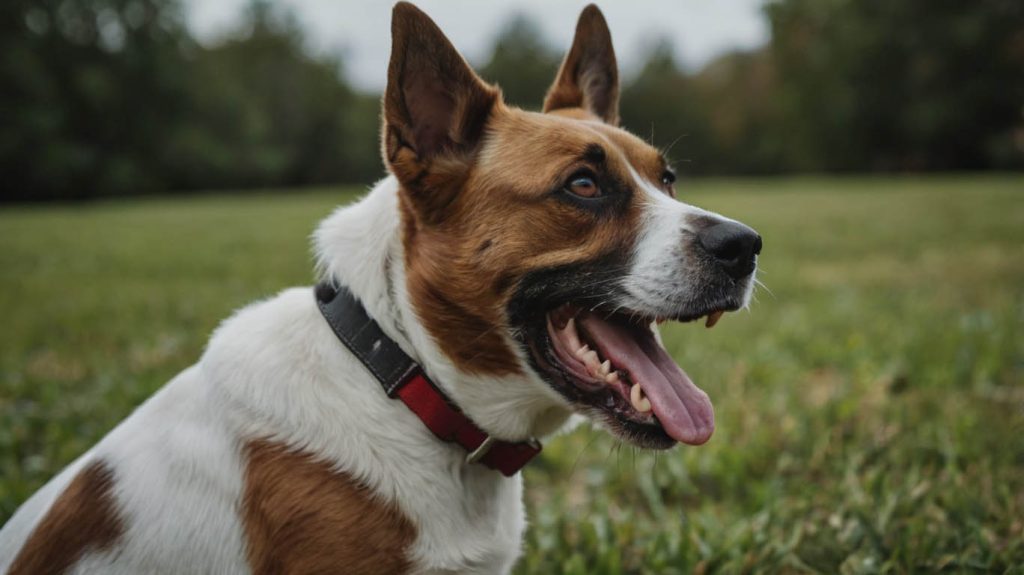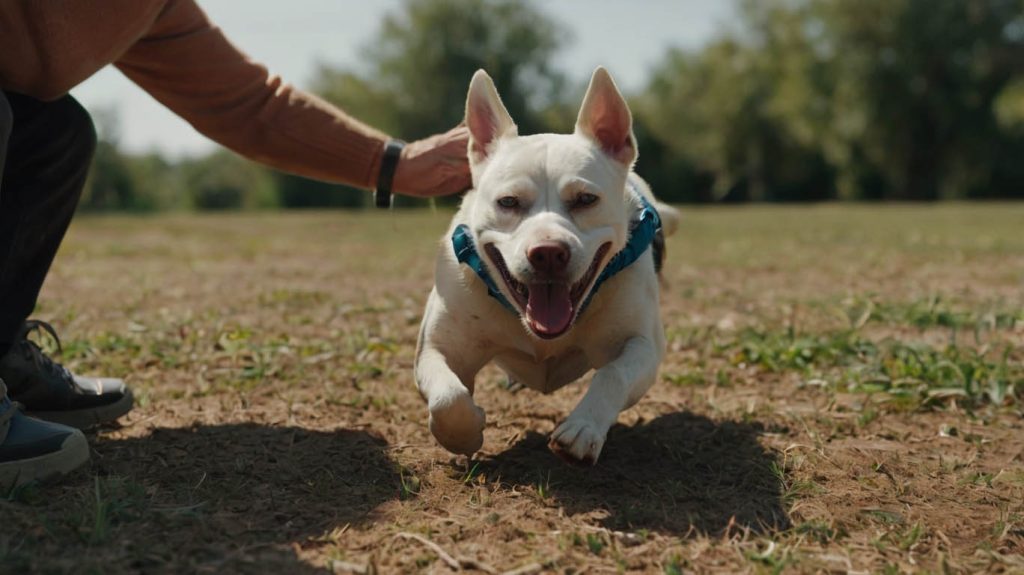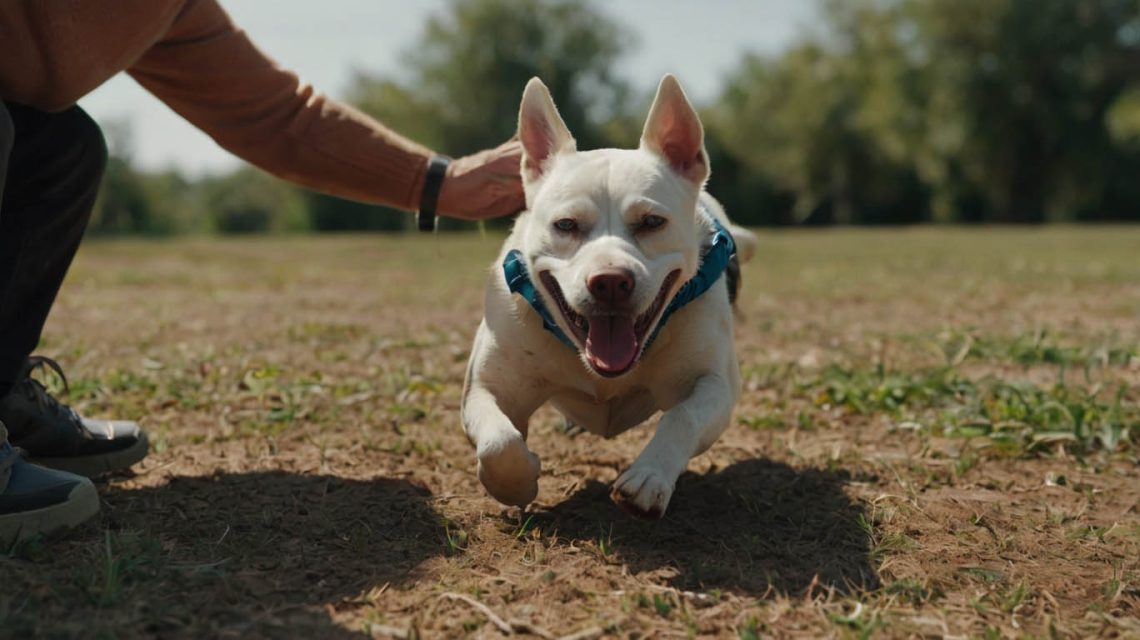Training a Stubborn Dog: The Ultimate Guide to Unlocking Their Potential
You love your dog with all your heart, but training sessions have become a battle of wills. You ask for a “sit,” and they stare at you blankly before wandering off to sniff something more interesting. You call their name at the park, and they give you a look that seems to say, “I’ll think about it,” before continuing their adventure. You’ve tried everything, yet you feel like you’re making no progress. Consequently, you’ve labeled them: you are the frustrated owner of a “stubborn dog.” This label feels true, but it’s also a dead end, leaving you searching for a breakthrough, a secret key to training a stubborn dog.
Here is the secret: Your dog is not stubborn. “Stubbornness” is a human label we apply to a dog who is unmotivated, confused, or physically unable to do what we are asking. They are not intentionally defying you. Instead, they are communicating that something in your training approach isn’t working for them. Therefore, this guide will help you crack the code. We will reframe the problem, explore the real reasons your dog isn’t listening, and provide you with a powerful, positive toolkit to transform your training and your relationship.
The First Step in Training a Stubborn Dog: Reframe the Problem
The single most important shift you can make is to stop thinking of your dog as stubborn. This label creates a mindset of conflict (“me vs. you”). Instead, think of yourself as a detective. Your job is to figure out why your dog isn’t responding. The cause is almost always one of three things:
- They Don’t Understand What You Want: Your training has not been clear enough.
- They Aren’t Motivated Enough: The reward you’re offering isn’t worth their effort.
- Something Else is Getting in the Way: They are distracted, fearful, or in pain.
By adopting this new perspective, you move from a place of frustration to one of problem-solving. This is the foundation of training a stubborn dog effectively.

Cracking the Code: Key Strategies for Training a Stubborn Dog
Once you’ve shifted your mindset, you can start implementing strategies that address the real root of the issue.
1. Find Their “Currency”: Unlocking Your Dog’s Motivation
This is the most common reason for a lack of compliance. The reward you are offering simply isn’t valuable enough to compete with the distraction at hand.
- The Problem: You’re trying to call them away from a fascinating squirrel using a dry biscuit. The squirrel is a “million-dollar” distraction; the biscuit is a “one-dollar” reward. It’s a bad trade.
- The Solution: Become a Treat Detective. You need to discover what your dog considers a high-value reward. Create a “treat hierarchy”:
- Low-Value: Their everyday kibble.
- Medium-Value: Standard dog biscuits or soft training treats.
- High-Value: Tiny pieces of chicken, cheese, hot dogs, or freeze-dried liver.
- Match the Reward to the Challenge. Use low-value treats for easy cues in a quiet room. Save the high-value “good stuff” for difficult tasks like recall in a distracting environment. For many owners, discovering the right motivator is the biggest breakthrough in training a stubborn dog.
2. Ensure Crystal-Clear Communication
Often, a dog isn’t being stubborn; they are genuinely confused about what you’re asking.
- The Problem: You’ve only ever practiced “sit” in your quiet living room. Now you’re at a busy park, and your dog doesn’t respond. They haven’t generalized the cue, meaning they don’t understand that “sit” means the same thing in this new, exciting place.
- The Solution: Go Back to Basics in New Environments. When you introduce a new location, temporarily lower your expectations. Use lures and hand signals again, as if you’re teaching the cue for the first time. Reward heavily for success.
- Keep Verbal Cues Consistent. Ensure everyone in the family is using the exact same word for each cue. If you say “come” but your partner says “here,” you are confusing your dog.
3. Keep Training Sessions Short, Fun, and Frequent
A dog who seems “stubborn” might just be bored or mentally exhausted.
- The Problem: You’re trying to have a 30-minute training session, drilling the same cue over and over. Your dog loses focus and “checks out.”
- The Solution: The “3-5 Minute” Rule. It is far more effective to have three separate 5-minute training sessions throughout the day than one long, 15-minute session. This keeps your dog engaged, excited, and successful. Always end on a positive note, with a cue you know they can nail.

Addressing Other Obstacles in Training a Stubborn Dog
If you’ve boosted your motivation and clarified your communication and are still struggling, it’s time to look for other roadblocks.
Rule Out Physical Pain
A sudden refusal to perform a familiar cue like “sit” or “down” can be a major red flag for pain. An undiagnosed condition like arthritis or a soft tissue injury can make these positions uncomfortable. If your dog suddenly seems “stubborn” about physical movements, a check-up with your veterinarian is essential.
Manage the Environment and Distractions
You cannot expect your dog to listen to you if the environment is too distracting.
- Start Easy: Begin all new training in a low-distraction environment, like your living room.
- Gradually Increase the Challenge: Once a cue is solid at home, practice in your backyard. Once it’s solid there, try a quiet street. A busy park is the “final exam,” not the starting point. This gradual approach is key to training a stubborn dog.
Consider Your Dog’s Breed Traits
Some breeds were intentionally developed for independent thinking. Hounds were bred to follow a scent for miles without handler input. Terriers were bred to hunt vermin with single-minded determination. This isn’t stubbornness; it’s what they were designed to do. Understanding your dog’s heritage can help you work with their instincts, not against them. For these breeds, finding ways to incorporate their natural drives into training can be incredibly effective.
The Most Important Thing to Avoid
Never resort to force or punishment. Using aversive methods or tools on a dog you perceive as stubborn will only create fear, damage your relationship, and shut them down completely. It confirms that training is an unpleasant, confusing experience. Positive reinforcement is the only path forward.
Unlocking Your Dog’s Willingness to Learn
Training a stubborn dog is one of the most rewarding journeys you can take as an owner. It forces you to become a better communicator, a more creative trainer, and a more empathetic partner. When you stop seeing a “stubborn” dog and start seeing an unmotivated or confused one, everything changes. You stop fighting against them and start working with them. And in that partnership, you will find the willing, engaged, and happy companion you always knew was there.
What is the biggest challenge you face when training your dog? Share your stories and questions in the comments below!


